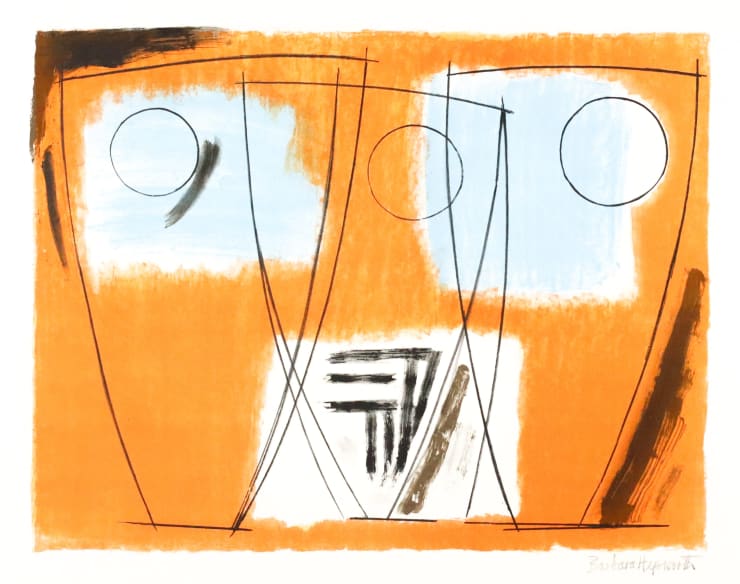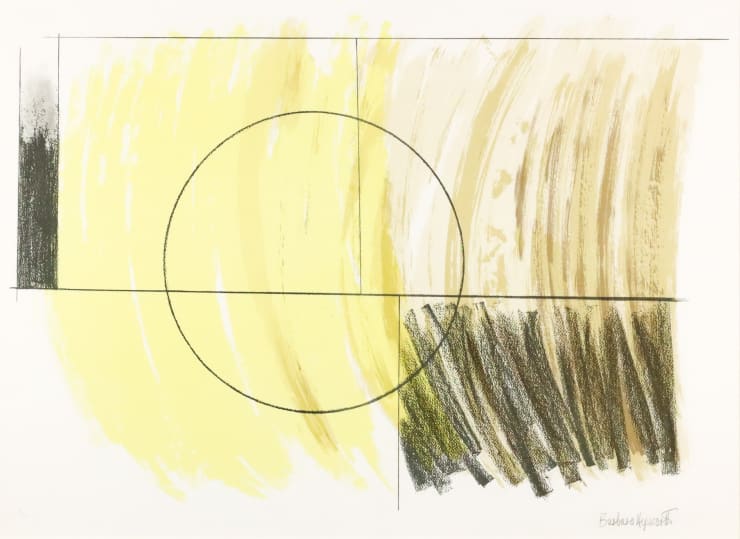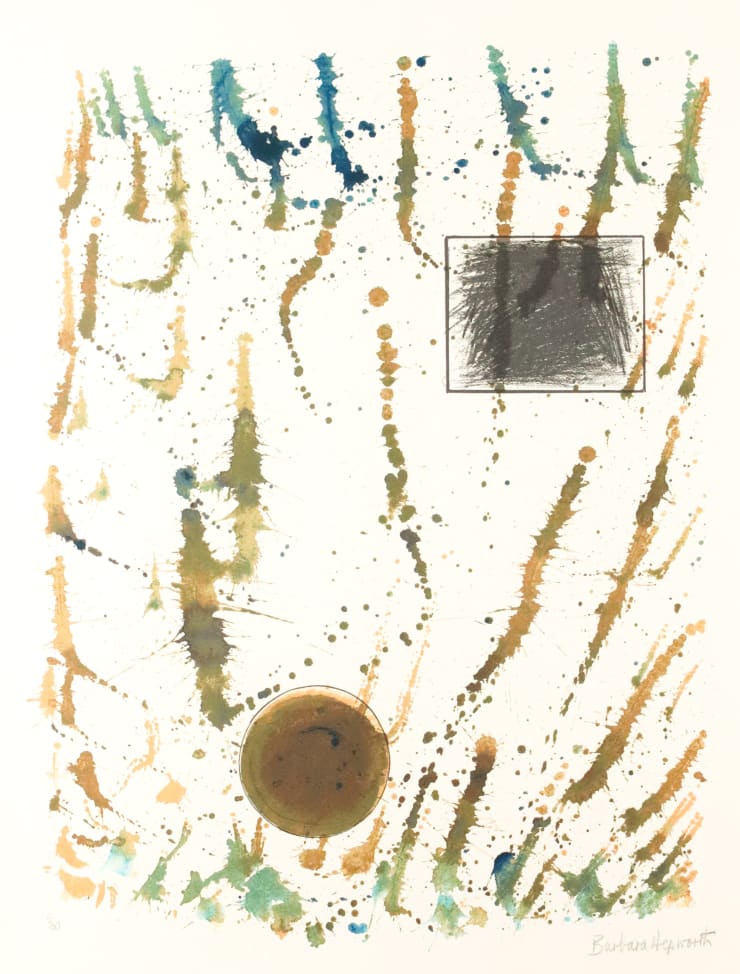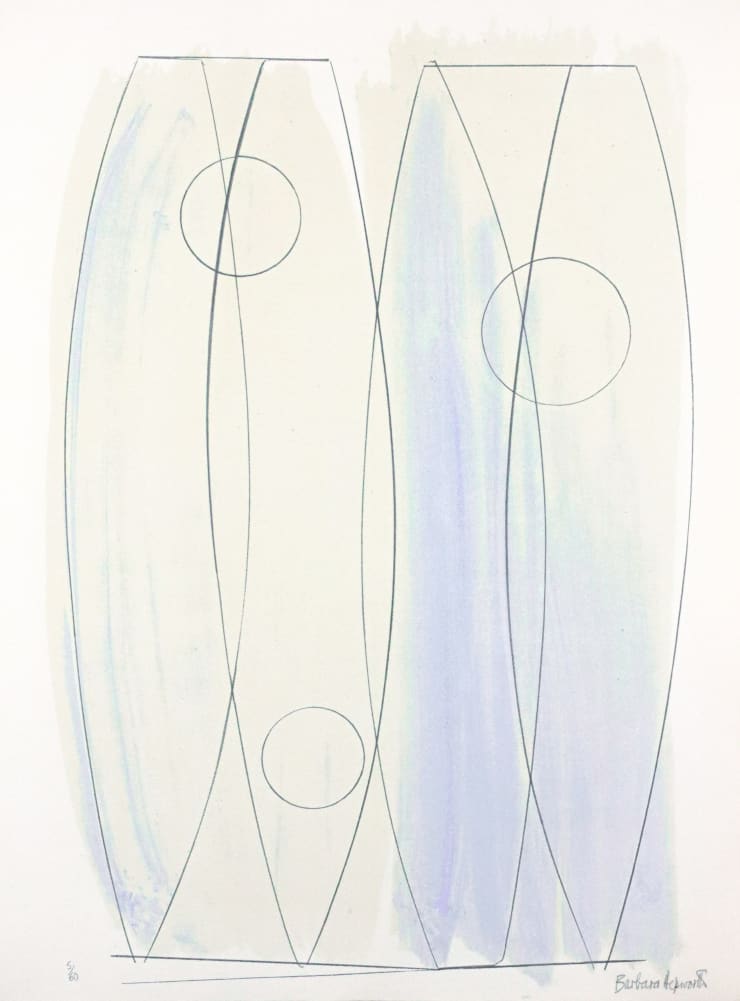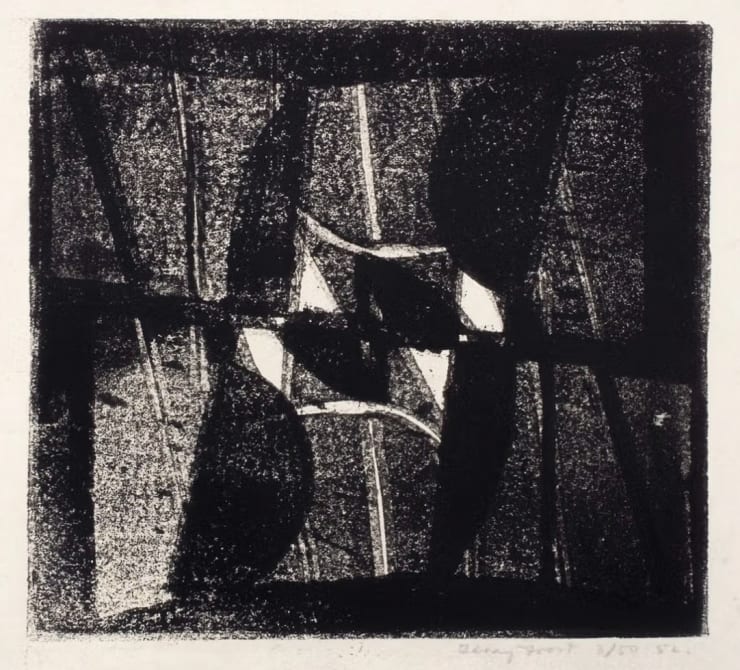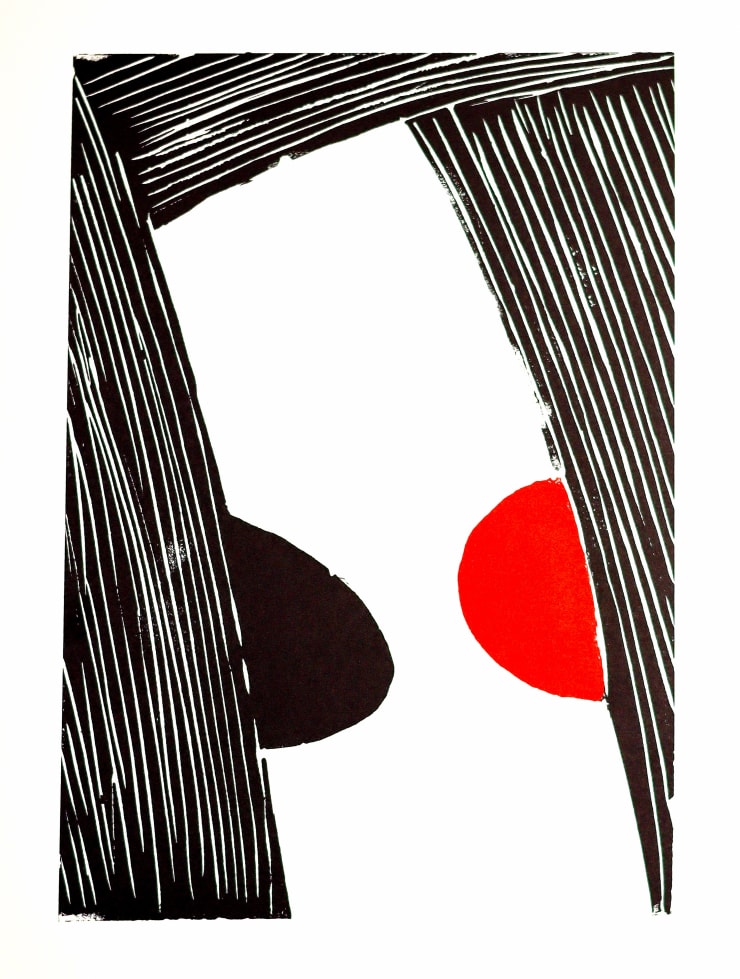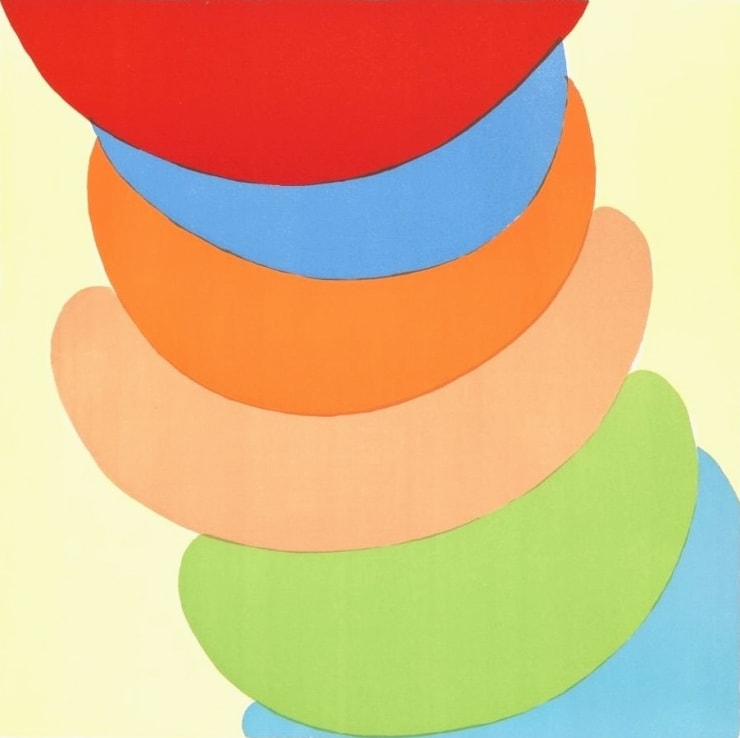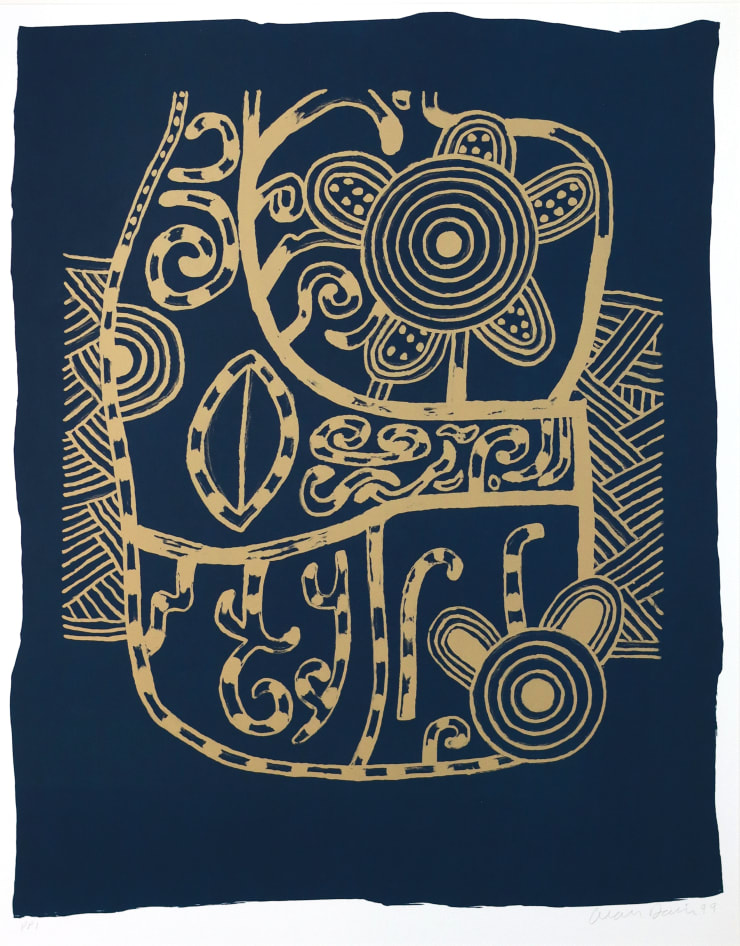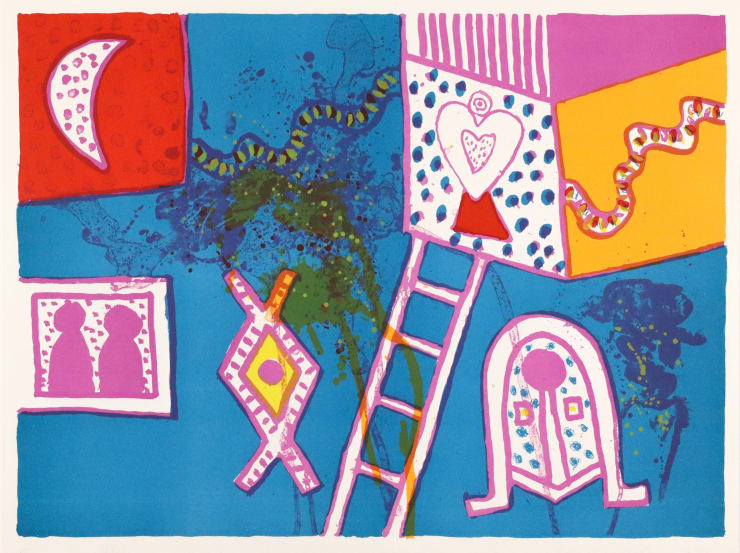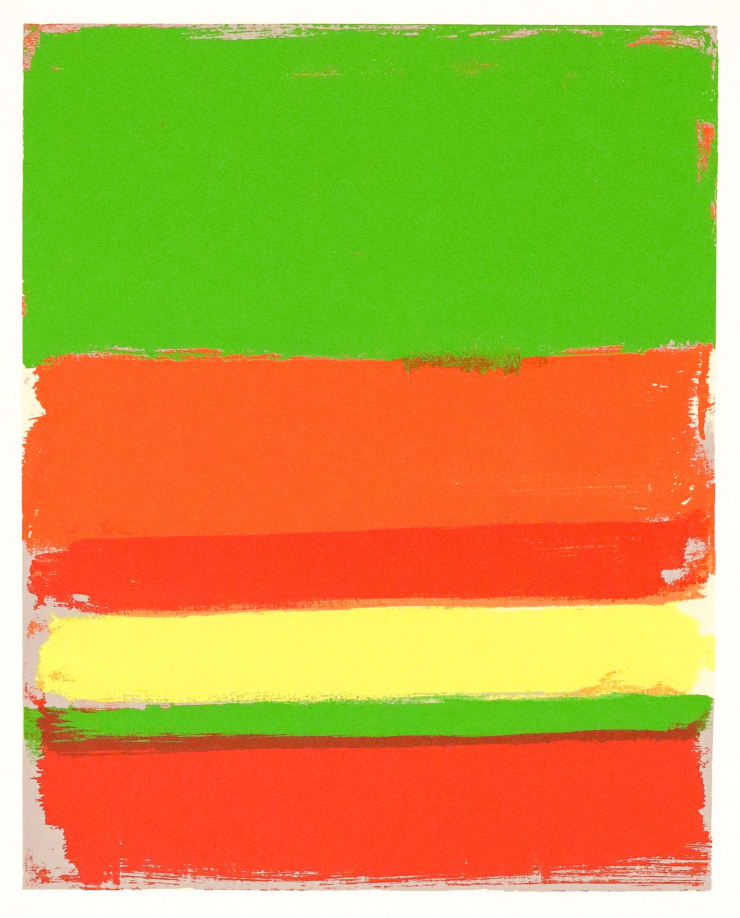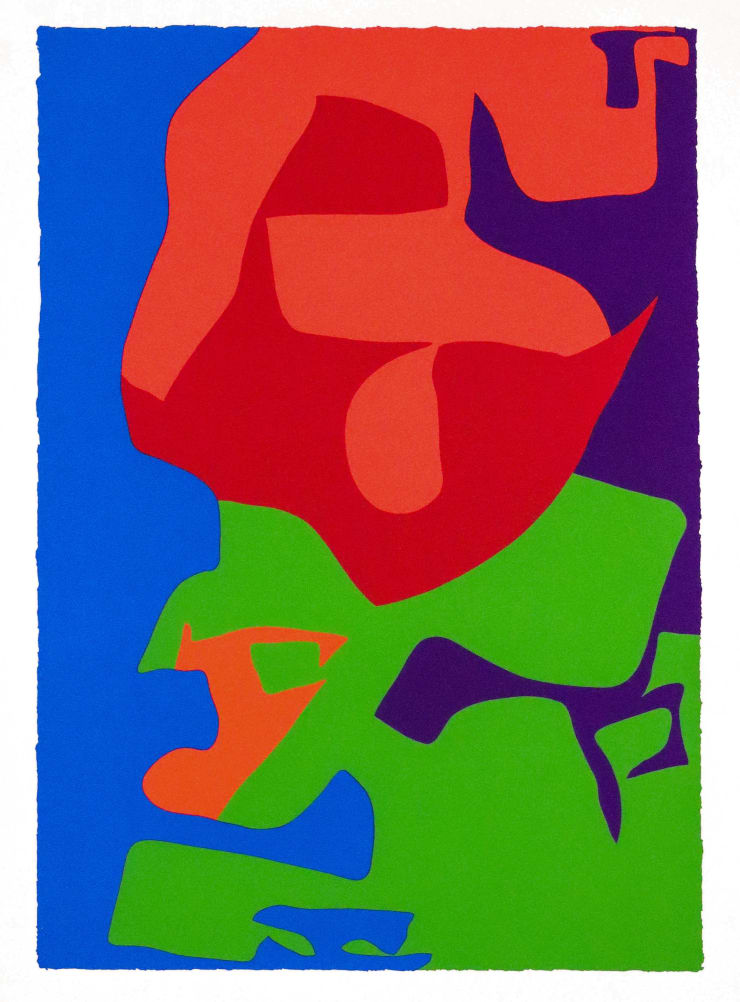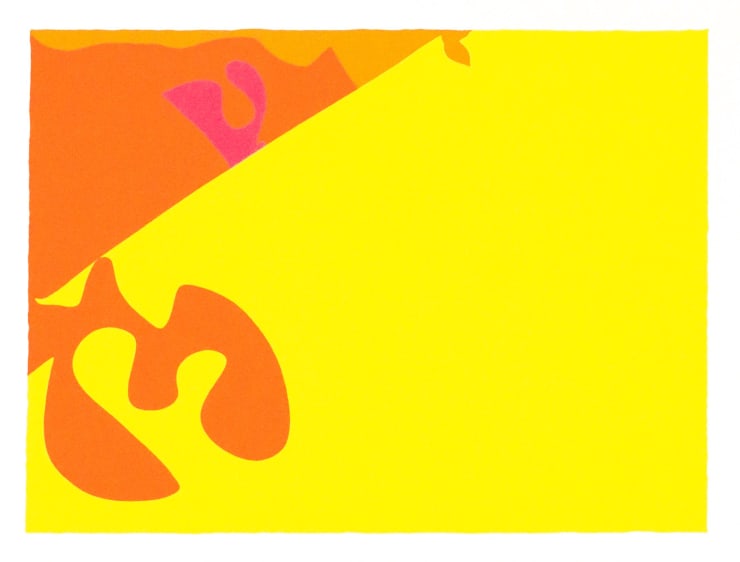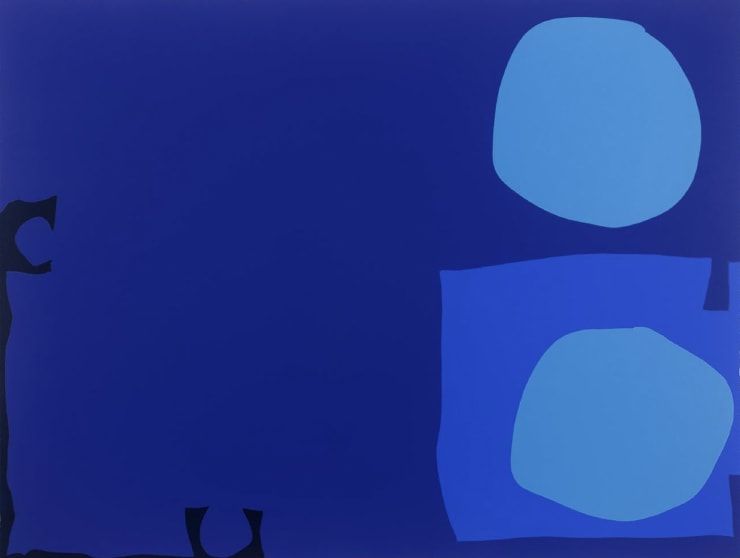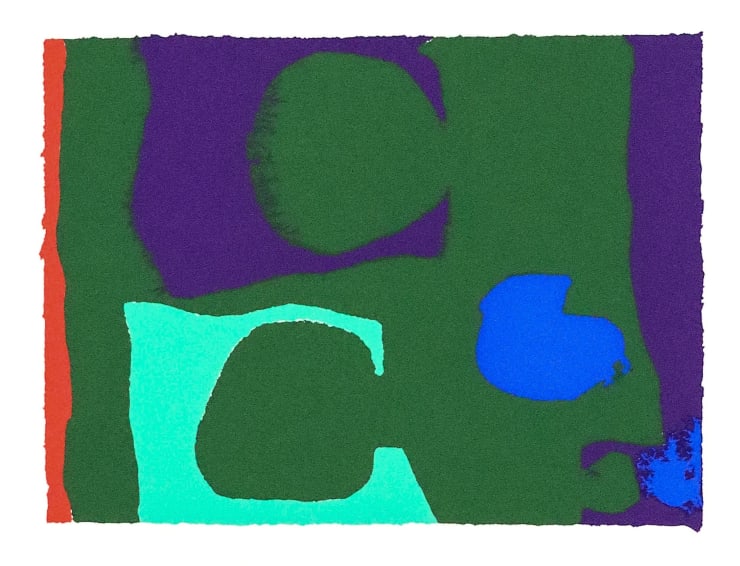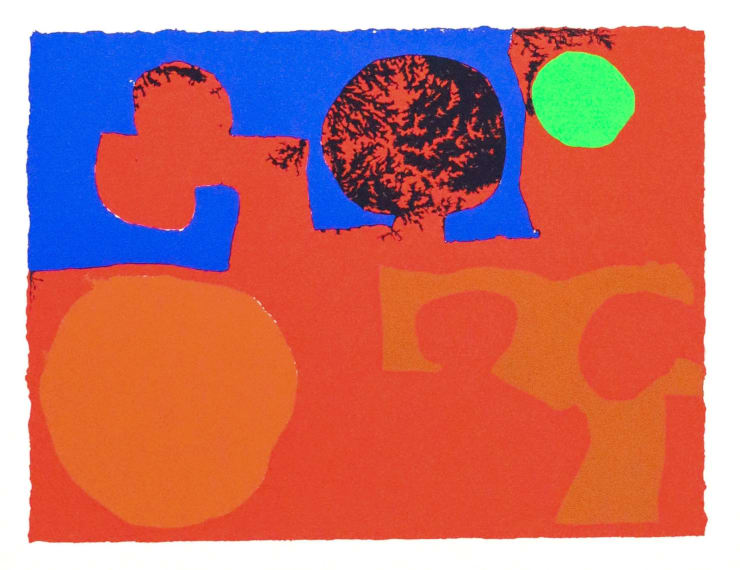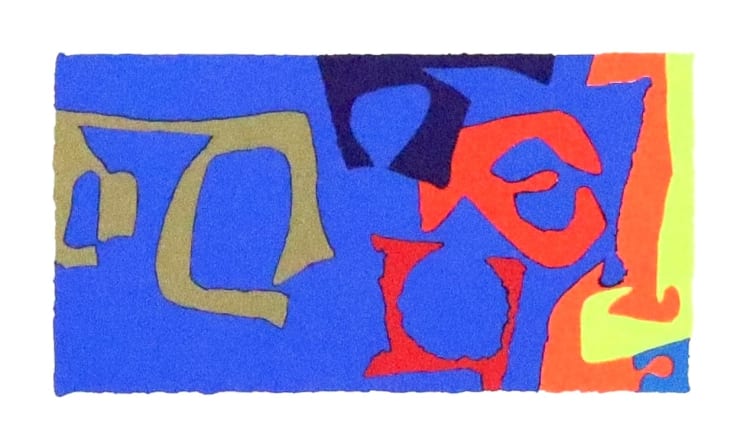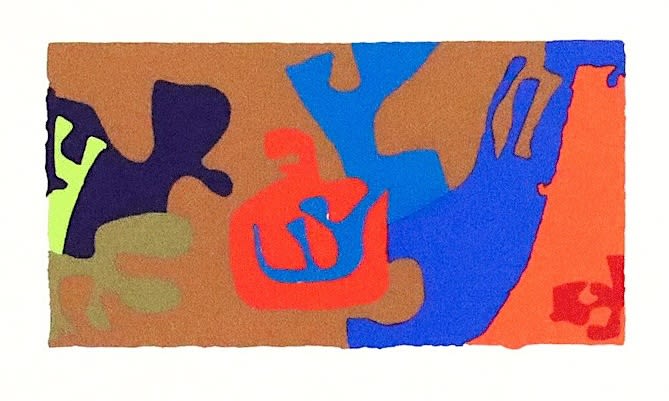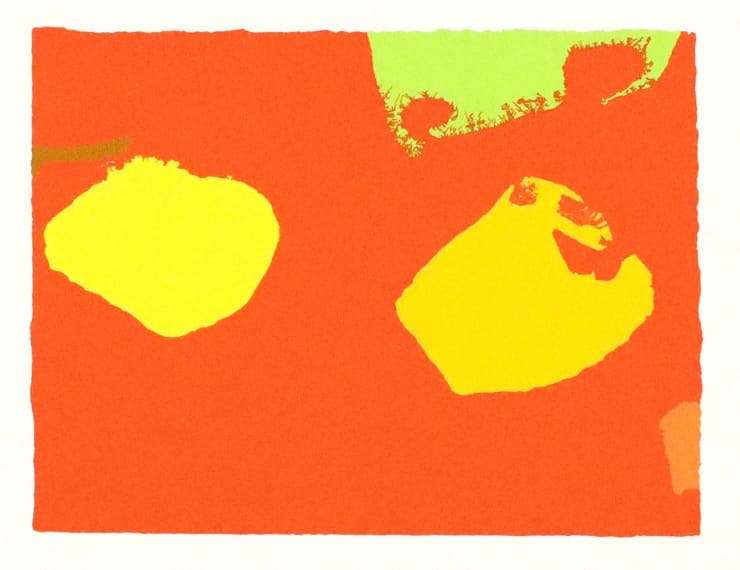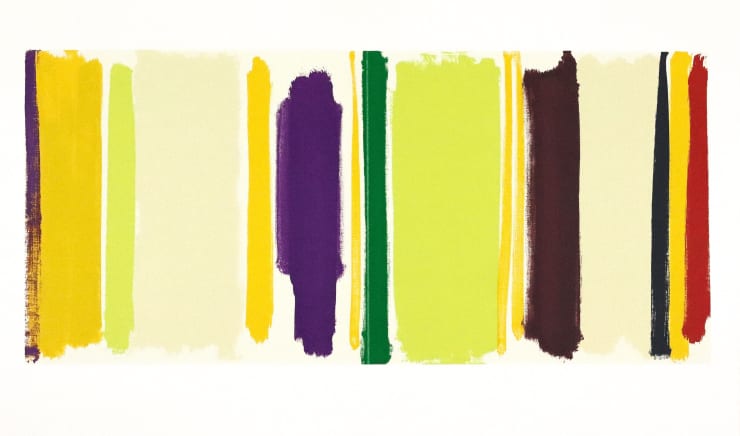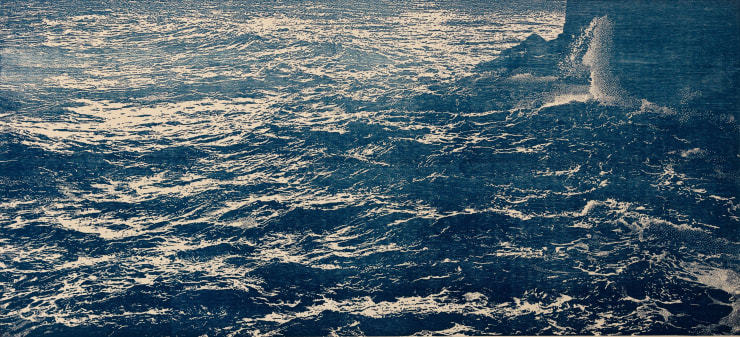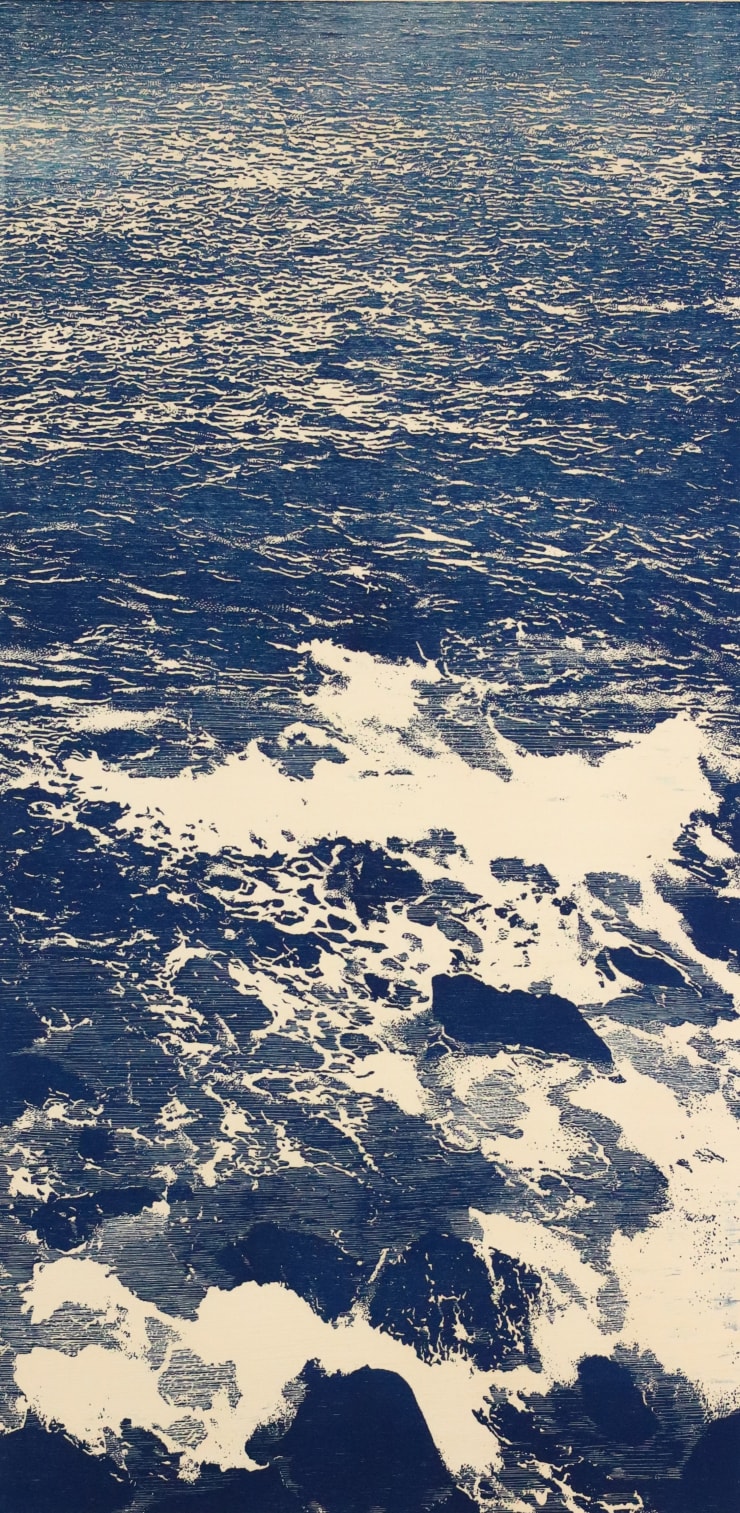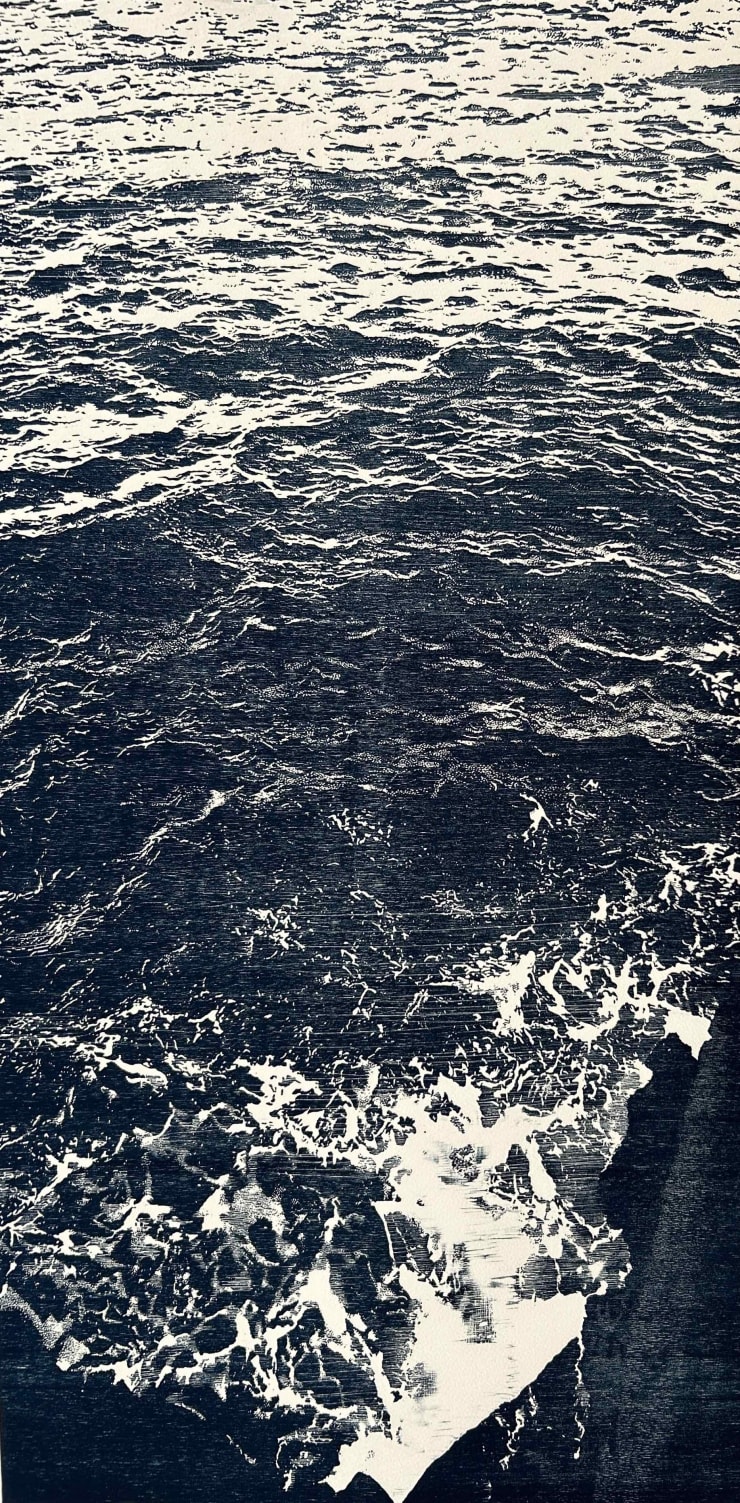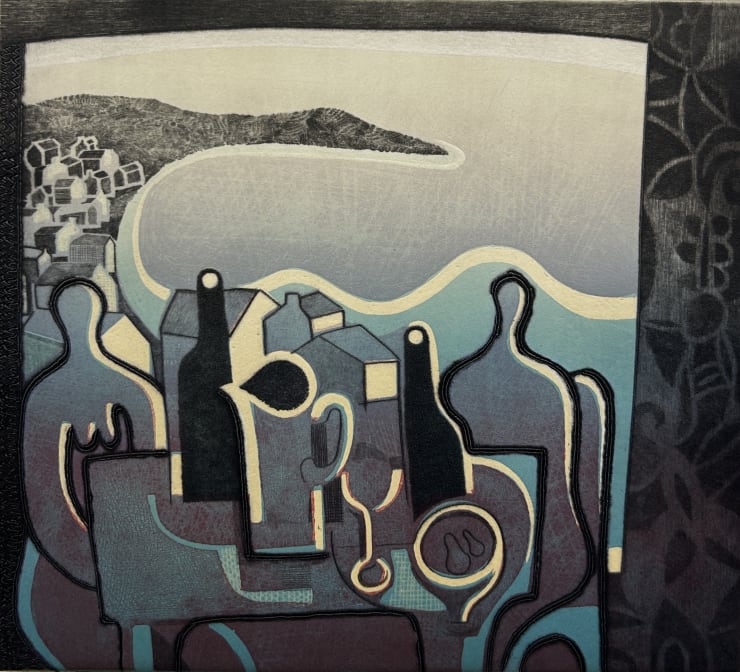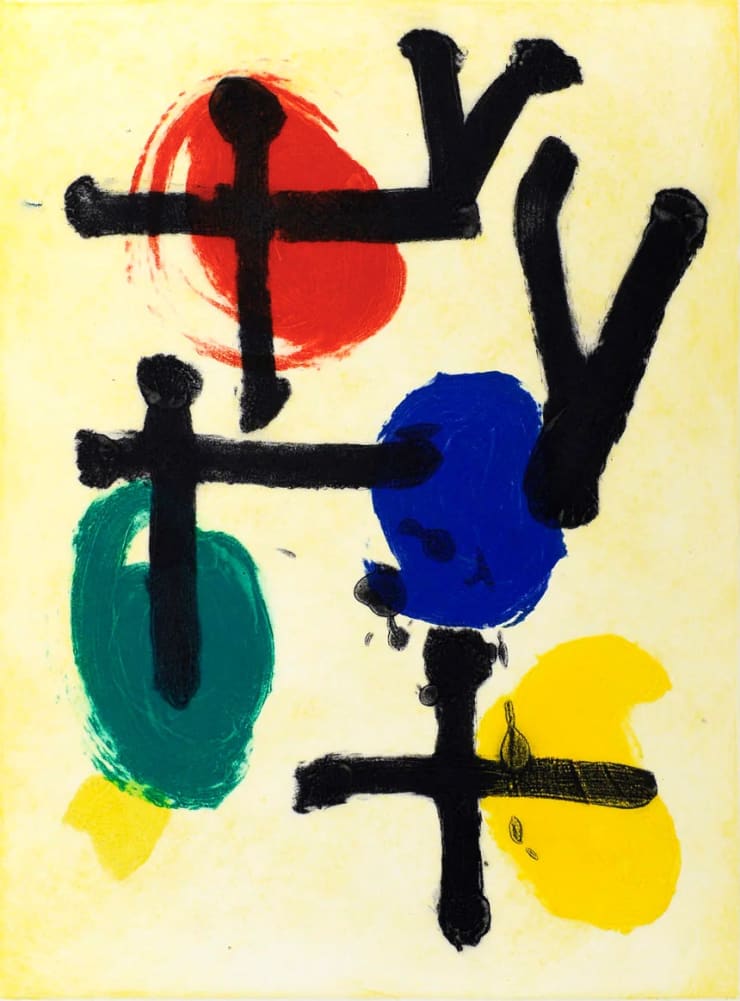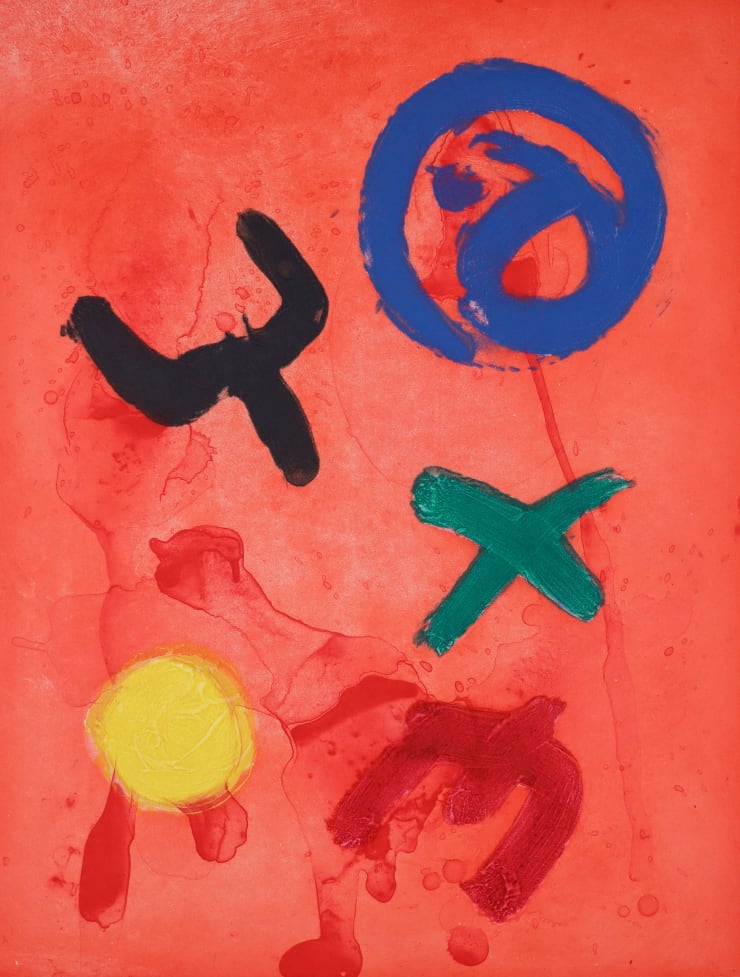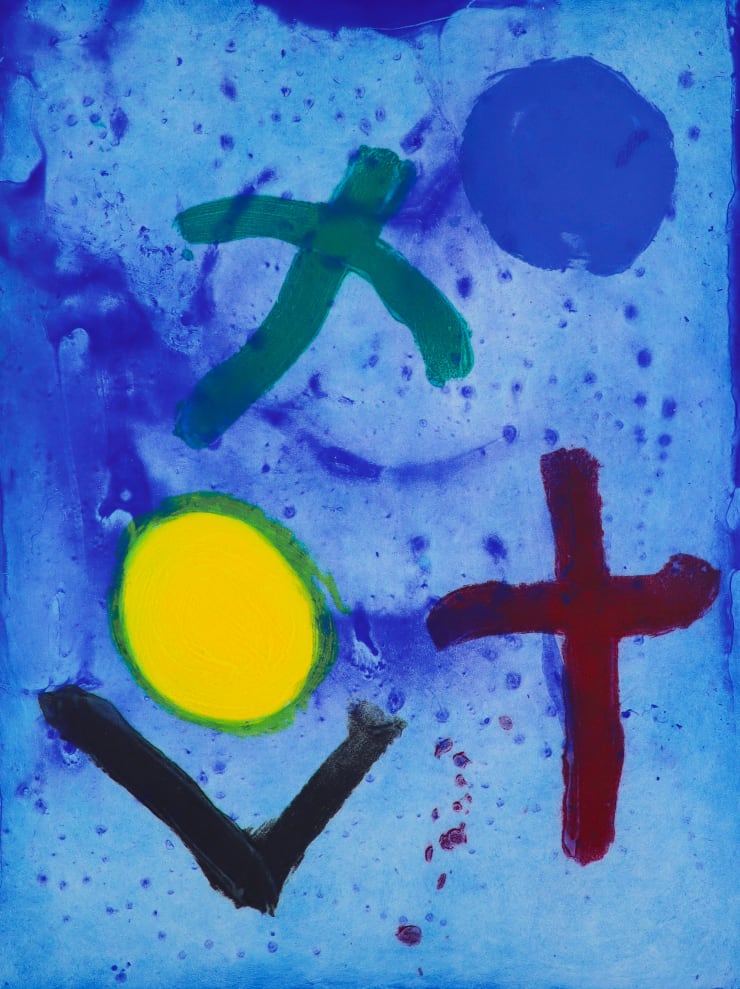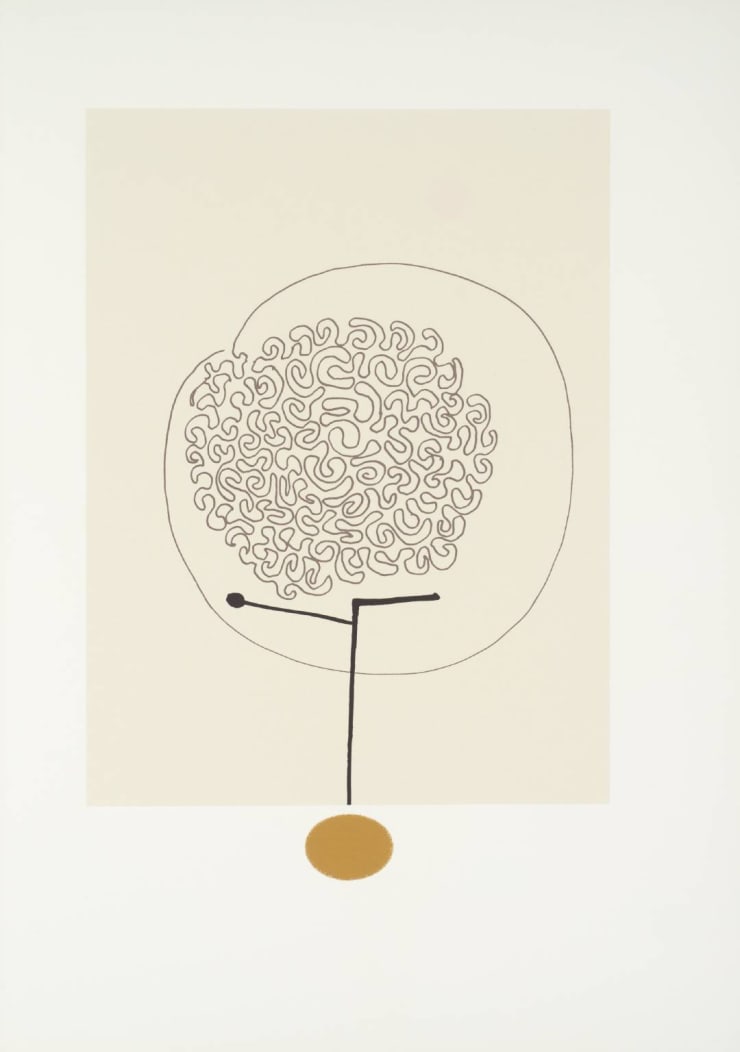Eames Fine Art Collectors' Studio & Atelier
54-58 Tanner Street
London SE1 3PH
-
The Cornish coast has always attracted artists in search of good light, dramatic landscape and a simple way of life, but the light in St Ives is said to be unlike anywhere else. The town is situated on the west coast of Cornwall, facing out towards the Atlantic Ocean, benefitting from softer, more diffuse light than other parts of the British Isles. It is a changing, enigmatic light that continues to attract artists through time.
Despite its small size, St Ives has had a significant impact on the world of art. Particularly around the mid-twentieth century, artists were enticed not only by St Ives' idyllic setting and perfect conditions for making work, but also by its bohemian reputation. St Ives has been home to many of Britain's most important modern artists, including Barbara Hepworth, Ben Nicholson, Patrick Heron, and Terry Frost. As their community grew, so did the town's reputation for a nature-inspired approach to abstraction. Artists like Peter Lanyon, Naum Gabo, Roger Hilton, Wilhelmina Barns-Graham, Bryan Pearce, John Hoyland, and Sandra Blow followed, and the town drew international figures such as Mark Rothko and Francis Bacon.Drawn to the Cornish landscape and to each other, many St Ives artists shared a commitment to abstraction. The region also became known for printmaking, with many painters producing exceptional etchings, lithographs, linocuts, and screenprints. Collaborations between artists and printmakers flourished-such as Barbara Hepworth with Stanley Jones, and Terry Frost with Hugh Stoneman.
St Ives remains a vibrant artistic centre. Since the opening of Tate St Ives in 1993, it has continued to attract artists and collectors from around the world. Eames Fine Art is proud to work with the studios and estates of master printmakers Hugh Stoneman, Stanley Jones, and Kip Gresham, as well as with Cornwall-based artist Trevor Price, who creates striking relief prints.
-
Barbara Hepworth (1903-1975)
Barbara Hepworth was a central figure in the modernist artistic community of St Ives, where she lived and worked for much of her life. Deeply involved in the town’s post-war cultural resurgence, she helped establish St Ives as an international hub for modern art. Her contribution to public life and cultural renewal in Britain was epitomised by her two major commissions for the 1951 Festival of Britain, and her legacy continues to shape the identity of St Ives as a place of creative innovation.Born in Wakefield, Yorkshire, Hepworth trained in sculpture at Leeds School of Art (1920–21) and the Royal College of Art (1921–24). In the early 1930s, she emerged as a leading voice in abstraction, pioneering the technique of piercing the sculptural block and experimenting with collage, photograms and printmaking. Her later works on paper reveal a deep affinity for form and mark-making. Hepworth's international standing was confirmed with the Grand Prix at the 1959 São Paolo Bienal, as well as numerous honours including a CBE (1958), DBE (1965), and the installation of her bronze Single Form outside the United Nations headquarters in New York in 1964. -
-
 Barbara HepworthOrchid, 1970POA
Barbara HepworthOrchid, 1970POA -
 Barbara HepworthThree Forms, 1969FramedSold
Barbara HepworthThree Forms, 1969FramedSold -
 Barbara HepworthSea Forms, 1969FramedPOA
Barbara HepworthSea Forms, 1969FramedPOA -
 Barbara HepworthMoon Landscape, 1973FramedPOA
Barbara HepworthMoon Landscape, 1973FramedPOA -
 Barbara HepworthAssembly of Square Forms, 1970FramedPOA
Barbara HepworthAssembly of Square Forms, 1970FramedPOA -
 Barbara HepworthForms in a Flurry, 1970FramedPOA
Barbara HepworthForms in a Flurry, 1970FramedPOA -
 Barbara HepworthFragment, 1970-71Framed£7,300.00
Barbara HepworthFragment, 1970-71Framed£7,300.00 -
 Barbara HepworthRangatira II, 1970FramedPOA
Barbara HepworthRangatira II, 1970FramedPOA -
 Barbara HepworthSun and Moon, 1969FramedSold
Barbara HepworthSun and Moon, 1969FramedSold -
 Barbara HepworthDecember Forms, 1969FramedPOA
Barbara HepworthDecember Forms, 1969FramedPOA -
 Barbara HepworthThree Forms Assembling, 1968-69POA
Barbara HepworthThree Forms Assembling, 1968-69POA -
 Barbara HepworthPastorale, 1969Framed£10,900.00
Barbara HepworthPastorale, 1969Framed£10,900.00
-
-
Ben Nicholson (1894-1982)
Ben Nicholson played a vital role in establishing St Ives as a centre of British modernism. He lived and worked in the town with Barbara Hepworth until 1958, and their creative exchange helped shape a significant period in both their practices. Inspired by the Cornish landscape and the dynamic artistic community, Nicholson’s time in St Ives marked a key phase in his career, one of intense experimentation and growing international recognition.Born into a family of artists, Nicholson was the son of painters William Nicholson and Mabel Pryde. He was a member of influential groups such as the Seven and Five Society and Unit One, placing him at the heart of Britain’s modernist movement. Known for his abstract geometric paintings, reliefs and prints, Nicholson combined formal clarity with a poetic sense of place, drawing inspiration from both British and European artists, including Piet Mondrian and Pablo Picasso. He won the first Guggenheim International Painting Prize in 1956, the international painting prize at the São Paolo Bienal in 1957, and was awarded the Order of Merit in 1968. -
Terry Frost (1915-2003)
Terry Frost’s move to St Ives in the late 1940s marked a turning point in his artistic career. Immersed in the thriving post-war art scene, he formed lasting relationships with artists such as Barbara Hepworth and Ben Nicholson, and drew deep inspiration from the Cornish landscape. St Ives became central to his development as an abstract artist, with its light, forms and rhythms influencing the dynamic energy of his work.Born in Leamington Spa, Frost served in the Royal Navy during the Second World War before studying at the Camberwell School of Arts and Crafts. He transitioned from representational painting to abstraction, developing a distinctive visual language of bold colour, geometric forms and joyful movement. Alongside his paintings, he was a prolific printmaker, embracing screen printing and etching in the 1960s with the same inventive spirit. Frost exhibited widely, taught at the University of Reading, and was appointed CBE in 1998 for his contribution to British art. -
William Scott (1913-1989)
William Scott was closely connected to the St Ives artistic community, exhibiting there regularly and maintaining friendships with key figures such as Ben Nicholson and Barbara Hepworth. Though not a permanent resident, he was part of the wider circle of artists drawn to the region’s creative energy in the post-war period. His association with St Ives placed him within the broader context of British modernism, where abstraction, landscape and still life converged in innovative ways.Born in Greenock, Scotland in 1913 and raised in Northern Ireland, Scott trained at the Royal Academy Schools in London. He is best known for his still lifes and abstract compositions, which merged everyday forms—jugs, plates, tables—with a restrained and rhythmic abstraction. His work balanced formal clarity with a sensual response to material and space. Internationally recognised, Scott represented Britain at the Venice Biennale in 1958, and his work is held in major public collections around the world. -
Alan Davie (1920-2014)
Alan Davie was closely linked to the St Ives art scene in the post-war years, sharing its spirit of experimentation and abstraction. Though not based there permanently, his visits brought him into conversation with artists like Ben Nicholson, and the town’s energy aligned with his improvisational, intuitive approach.Born in Grangemouth in 1920, Davie studied at Edinburgh College of Art and pursued jazz and jewellery-making alongside painting. Influenced by Surrealism, Zen Buddhism and ancient cultures, his bold, symbolic works embraced spontaneity and gesture. In 1948, Peggy Guggenheim acquired his work in Venice, launching his international career. He exhibited widely, with works now in Tate, MoMA and the Guggenheim, and was appointed CBE in 1972. -
-
 Alan DavieIncantation, 1999Framed£1,035.00
Alan DavieIncantation, 1999Framed£1,035.00 -
 Alan DavieBlue Incantation, 1999FramedSold
Alan DavieBlue Incantation, 1999FramedSold -
 Alan DavieGrangemouth Image, 2010£1,850.00
Alan DavieGrangemouth Image, 2010£1,850.00 -
 Alan DavieTo a Celtic Spirit II, 2001£1,950.00
Alan DavieTo a Celtic Spirit II, 2001£1,950.00 -
 Alan DavieCosmic Signals No.2, 2001£1,500.00
Alan DavieCosmic Signals No.2, 2001£1,500.00 -
 Alan DavieFoxwatch XVI, 1970Framed£1,200.00
Alan DavieFoxwatch XVI, 1970Framed£1,200.00 -
 Alan DavieVariations on a Theme - 34, 2003Framed£275.00
Alan DavieVariations on a Theme - 34, 2003Framed£275.00 -
 Alan DavieVariations on a Theme - 15, 2003Framed£275.00
Alan DavieVariations on a Theme - 15, 2003Framed£275.00
-
-
Patrick Heron (1920-1999)
Patrick Heron was a central figure in the St Ives art community, living and working at Eagles Nest in Zennor from 1956. The Cornish light and landscape profoundly shaped his vibrant explorations of colour and form, and he became one of the most influential voices in post-war British abstraction.Born in Leeds in 1920, Heron was inspired early on by Cézanne, Matisse and Braque, eventually moving from figuration to bold, expressive abstraction. His signature works—‘stripe’ paintings and later ‘wobbly hard-edge’ compositions—reflect his belief in the emotional power of colour. A leading art critic as well as a painter, Heron also contributed to the design of a stained-glass window for Tate St Ives. His work is held in major collections including Tate, MoMA and the V&A. -
-
 Patrick HeronSmall Horizon with Orange, Lime, Lemon and Cherry, 1957Framed£3,140.00
Patrick HeronSmall Horizon with Orange, Lime, Lemon and Cherry, 1957Framed£3,140.00 -
 Patrick HeronSecond Vertical Screenprint, 1976FramedSold
Patrick HeronSecond Vertical Screenprint, 1976FramedSold -
 Patrick HeronFirst Vertical Screenprint, 1976Framed£2,950.00
Patrick HeronFirst Vertical Screenprint, 1976Framed£2,950.00 -
 Patrick HeronYellow Diagonal, 1978Framed£2,690.00
Patrick HeronYellow Diagonal, 1978Framed£2,690.00 -
 Patrick HeronFour Blues, Two Discs, 1970FramedSold
Patrick HeronFour Blues, Two Discs, 1970FramedSold -
 Patrick HeronTwo Greens with Violet and Blue, 1976FramedSold
Patrick HeronTwo Greens with Violet and Blue, 1976FramedSold -
 Patrick HeronBlue with Lime, Umber, Dull Red and Orange in Violet, 1976Framed£2,690.00
Patrick HeronBlue with Lime, Umber, Dull Red and Orange in Violet, 1976Framed£2,690.00 -
 Patrick HeronJune Mini 5, 1968Framed£2,690.00
Patrick HeronJune Mini 5, 1968Framed£2,690.00 -
 Patrick HeronMini February V, 1974Framed£2,500.00
Patrick HeronMini February V, 1974Framed£2,500.00 -
 Patrick HeronMini Mini, 1972Framed£2,390.00
Patrick HeronMini Mini, 1972Framed£2,390.00 -
 Patrick HeronKatherine Christmas, 1976Framed£2,090.00
Patrick HeronKatherine Christmas, 1976Framed£2,090.00 -
 Patrick HeronSusanna Christmas, 1976Framed£2,090.00
Patrick HeronSusanna Christmas, 1976Framed£2,090.00 -
 Patrick HeronLime and Yellows in Orange, 1976Framed£2,500.00
Patrick HeronLime and Yellows in Orange, 1976Framed£2,500.00 -
 Patrick HeronMini January VIII, 1974Framed£2,500.00
Patrick HeronMini January VIII, 1974Framed£2,500.00 -
 Patrick HeronRed in Umber with Orange and Ice-Green , 1977FramedSold
Patrick HeronRed in Umber with Orange and Ice-Green , 1977FramedSold -
 Patrick HeronPiano, 1943Sold
Patrick HeronPiano, 1943Sold -
 Patrick HeronVertical Light , 1957FramedSold
Patrick HeronVertical Light , 1957FramedSold -
 Patrick HeronViolet Diagonal, 1978Framed£2,950.00
Patrick HeronViolet Diagonal, 1978Framed£2,950.00
-
-
Bryan Pearce (1929-2007)
Bryan Pearce was born and lived his entire life in St Ives, making the town both his home and his enduring subject. His distinctive, naïve style captured the essence of local life and landscape through bold outlines, vibrant colours and flat perspectives, creating work often likened to stained glass.
Diagnosed with phenylketonuria, Pearce began painting in the 1950s, studying at the St Ives School of Painting. He was supported by the local art community and joined the Penwith and Newlyn Societies in 1957. His work, celebrated for its clarity and directness, has been widely exhibited, including at Tate St Ives and the Museum of Modern Art Oxford, and is held in major collections such as Tate and the Royal Cornwall Museum.
-
Trevor Price (b. 1966)
Trevor Price is a Cornwall-born printmaker whose finely detailed drypoint and relief prints often explore intimate human connections and coastal landscapes. Trained at Falmouth and Winchester Schools of Art, his work is deeply influenced by the textures and forms of his native environment.
Known for his distinctive linework and use of texture, Price’s prints frequently depict entwined figures and interior spaces.
Elected to the Royal Society of Painter-Printmakers in 1994, he served as its Vice President from 2013 to 2018. His work is held in major public collections, including the Victoria and Albert Museum and the Ashmolean Museum, and in 2020 he was commissioned by the National Academy of Painting in China.
-
-
 Trevor PriceMeet me here tomorrow- Latitude 50º 6’ 42”N Longitude 5º 32’ 33” W, 2025£620.00
Trevor PriceMeet me here tomorrow- Latitude 50º 6’ 42”N Longitude 5º 32’ 33” W, 2025£620.00 -
 Trevor PriceThis is Where I Want to be Right Now, 2024£620.00
Trevor PriceThis is Where I Want to be Right Now, 2024£620.00 -
 Trevor PriceRomantic Atlantic, 2023£750.00
Trevor PriceRomantic Atlantic, 2023£750.00 -
 Trevor PriceRock ’n Roll, 2025Sold
Trevor PriceRock ’n Roll, 2025Sold -
 Trevor PriceSmall Wave I, 2024£200.00
Trevor PriceSmall Wave I, 2024£200.00 -
 Trevor PriceSmall Wave II, 2024£200.00
Trevor PriceSmall Wave II, 2024£200.00 -
 Trevor Price13.56 01-01-23 Latitude 5° 6’ 42”N Longitude 5° 32’ 33” W, 2023£360.00
Trevor Price13.56 01-01-23 Latitude 5° 6’ 42”N Longitude 5° 32’ 33” W, 2023£360.00 -
 Trevor Price13.58 01-01-23 Latitude 5° 6’ 42”N Longitude 5° 32’ 33” W, 2023£360.00
Trevor Price13.58 01-01-23 Latitude 5° 6’ 42”N Longitude 5° 32’ 33” W, 2023£360.00 -
 Trevor PriceHepworth's Garden I, 2022£620.00
Trevor PriceHepworth's Garden I, 2022£620.00 -
 Trevor PriceLatitude 50° 12’ 19” N Longitude 005° 33’ 23” W, 2022£620.00
Trevor PriceLatitude 50° 12’ 19” N Longitude 005° 33’ 23” W, 2022£620.00 -
 Trevor PriceAn Ocean to Swim, 2023Sold
Trevor PriceAn Ocean to Swim, 2023Sold -
 Trevor PriceI’d Swim an Ocean to Find You, 2023Sold
Trevor PriceI’d Swim an Ocean to Find You, 2023Sold -
 Trevor PriceStorm Waves II, 2022£200.00
Trevor PriceStorm Waves II, 2022£200.00 -
 Trevor PriceSummer Dreaming, 2012£350.00
Trevor PriceSummer Dreaming, 2012£350.00 -
 Trevor PriceBottles, Pears and the Ocean, 2013£350.00
Trevor PriceBottles, Pears and the Ocean, 2013£350.00 -
 Trevor PriceThe Five Senses Satisfied, 2012£350.00
Trevor PriceThe Five Senses Satisfied, 2012£350.00 -
 Trevor PriceIndian Summer, 2012£350.00
Trevor PriceIndian Summer, 2012£350.00 -
 Trevor PriceFine Wine, 2012£350.00
Trevor PriceFine Wine, 2012£350.00 -
 Trevor PriceCoastal Still Life II, 2012£350.00
Trevor PriceCoastal Still Life II, 2012£350.00 -
 Trevor PriceA Rose for my Rose, 2012£350.00
Trevor PriceA Rose for my Rose, 2012£350.00
-
-
Sandra Blow (1925-2006)
Sandra Blow was a key figure in British abstract art, whose return to St Ives in the 1990s marked a renewed connection with the town’s legacy of experimentation and modernism. She lived and worked there until her death, contributing actively to its artistic community and exhibiting widely.
Born in London in 1925, Blow studied at Saint Martin’s and the Royal Academy Schools before travelling to Italy, where a formative encounter with artist Alberto Burri inspired her bold use of materials. Her large-scale works are known for their dynamic compositions and tactile surfaces, often incorporating sawdust, plaster, torn paper and vivid colour. A Royal Academician from 1978, Blow exhibited internationally (including at the Venice Biennale) and her work is held in major collections such as Tate, MoMA and the V&A.
-
Anthony Frost (b.1951)
Anthony Frost is a prominent British abstract artist whose bold use of colour and textured surfaces reflect a lifelong engagement with the energy of painting. Son of celebrated painter Terry Frost, he has lived and worked in Cornwall for much of his life, and his practice is firmly rooted in the post-war artistic legacy of St Ives.Born in London in 1951, Frost studied at Chelsea School of Art before establishing a distinctive style defined by vivid colour palettes, spontaneous composition, and the use of unconventional materials such as hessian, sailcloth and rope. Influenced by abstract expressionism, colour field painting, and his passion for music, his work balances structure with improvisation, creating a strong sense of rhythm and movement.Frost has exhibited widely across the UK and internationally, including at Tate, the Royal Academy, and contemporary art fairs such as Frieze London. His work is held in numerous public and private collections, and he has also taught at institutions including Falmouth School of Art and Canterbury School of Art. -
John Hoyland (1934-2011)
John Hoyland was one of Britain’s leading abstract painters, celebrated for his fearless use of colour, scale, and gestural form. Though not based in St Ives, Hoyland’s connection to the town was cemented through his collaboration with master printmaker Hugh Stoneman, who invited him to Cornwall in the 1990s. It was in Stoneman’s studio that Hoyland created a remarkable series of prints that distilled the expressive power of his painting into print form.
The works Flying Wild, Secret Summer, and Endless Poem exemplify this dynamic collaboration. Printed in St Ives, they combine vivid colour fields with layered mark-making, revealing Hoyland’s intuitive response to both process and place. These prints are not just reproductions of painted ideas but standalone works that reflect the freedom and intensity of his visual language.
-
Wilhelmina Barns-Graham (1912-2004)
Wilhelmina Barns-Graham (1912–2004) was a key figure in the St Ives modernist movement, known for her bold abstract works inspired by natural forms. After moving to St Ives in 1940, she became closely associated with artists like Barbara Hepworth and Ben Nicholson and was a founding member of the Penwith Society of Arts.
Her work explored the rhythms of nature through colour, structure, and abstraction, shaped by moments like her pivotal 1949 visit to the Grindelwald Glacier. In later years, she embraced printmaking with renewed energy, producing vibrant, expressive works that continued her lifelong commitment to innovation.
-
Victor Pasmore (1906-1998)
Victor Pasmore (1908–1998) was a leading figure in British abstraction and a pivotal force in the development of post-war modernism. Though not a permanent resident of St Ives, Pasmore was closely connected to the movement that grew from the town's vibrant artistic community. His transition from figurative painting to pure abstraction in the late 1940s aligned with the direction being taken by artists in Cornwall, such as Ben Nicholson and Barbara Hepworth, whose embrace of geometry and spatial exploration mirrored his own evolving style.
Pasmore’s contribution to British abstraction resonated strongly with the principles championed in St Ives - particularly the synthesis of natural inspiration with formal innovation. While his most celebrated works emerged from his involvement with the Independent Group and his architectural collaborations, his visual language shares a clear kinship with the reductive, balanced compositions associated with St Ives modernism. His presence in the wider discourse helped to solidify the broader national and international importance of the St Ives movement.
-
-
 Victor PasmoreThe Image in Search of Itself (XV), 1977FramedSold
Victor PasmoreThe Image in Search of Itself (XV), 1977FramedSold -
 Victor PasmoreThe Image in Search of Itself (XIV), 1977Framed£1,100.00
Victor PasmoreThe Image in Search of Itself (XIV), 1977Framed£1,100.00 -
 Victor PasmoreThe Image in Search of Itself (IV), 1977FramedSold
Victor PasmoreThe Image in Search of Itself (IV), 1977FramedSold -
 Victor PasmoreThe Image in Search of Itself (XIII), 1977Framed£1,100.00
Victor PasmoreThe Image in Search of Itself (XIII), 1977Framed£1,100.00 -
 Victor PasmoreThe Image in Search of Itself (XII), 1977Framed£1,740.00
Victor PasmoreThe Image in Search of Itself (XII), 1977Framed£1,740.00 -
 Victor PasmoreThe Image in Search of Itself (XI), 1977Framed£1,100.00
Victor PasmoreThe Image in Search of Itself (XI), 1977Framed£1,100.00 -
 Victor PasmoreThe Image in Search of Itself (X), 1977Framed£1,100.00
Victor PasmoreThe Image in Search of Itself (X), 1977Framed£1,100.00 -
 Victor PasmoreThe Image in Search of Itself (VIII), 1977Framed£1,100.00
Victor PasmoreThe Image in Search of Itself (VIII), 1977Framed£1,100.00 -
 Victor PasmoreThe Image in Search of Itself (VII), 1977Framed£1,100.00
Victor PasmoreThe Image in Search of Itself (VII), 1977Framed£1,100.00 -
 Victor PasmoreThe Image in Search of Itself (V), 1977Framed£1,100.00
Victor PasmoreThe Image in Search of Itself (V), 1977Framed£1,100.00 -
 Victor PasmoreThe Image in Search of Itself (IX), 1977Framed£1,740.00
Victor PasmoreThe Image in Search of Itself (IX), 1977Framed£1,740.00 -
 Victor PasmoreThe Image in Search of Itself (VI), 1977Framed£1,740.00
Victor PasmoreThe Image in Search of Itself (VI), 1977Framed£1,740.00 -
 Victor PasmoreThe Image in Search of Itself (III), 1977Framed£1,740.00
Victor PasmoreThe Image in Search of Itself (III), 1977Framed£1,740.00 -
 Victor PasmoreThe Image in Search of Itself (II), 1977Framed£1,100.00
Victor PasmoreThe Image in Search of Itself (II), 1977Framed£1,100.00 -
 Victor PasmoreThe Image in Search of Itself (I), 1977Framed£1,100.00
Victor PasmoreThe Image in Search of Itself (I), 1977Framed£1,100.00
-


